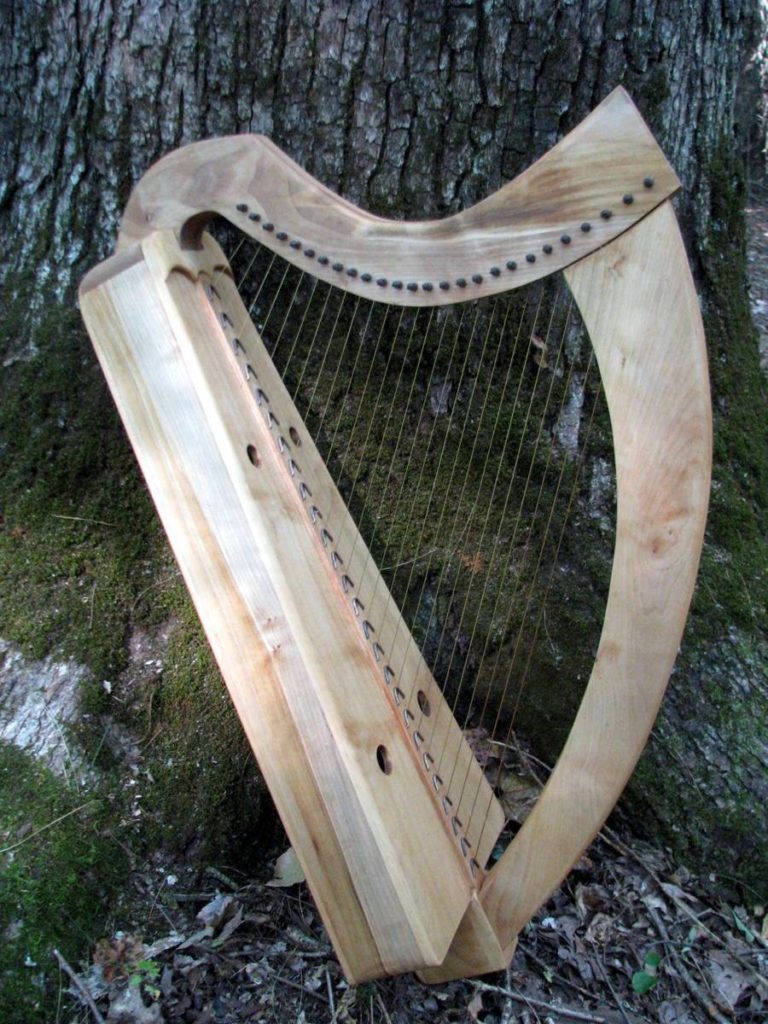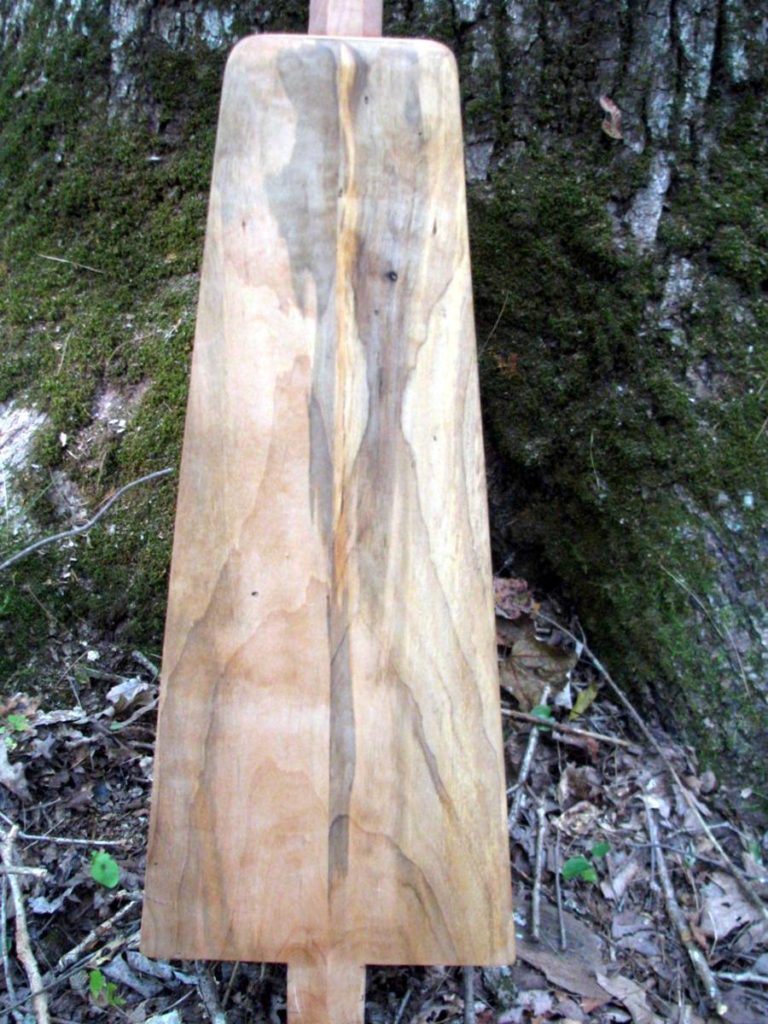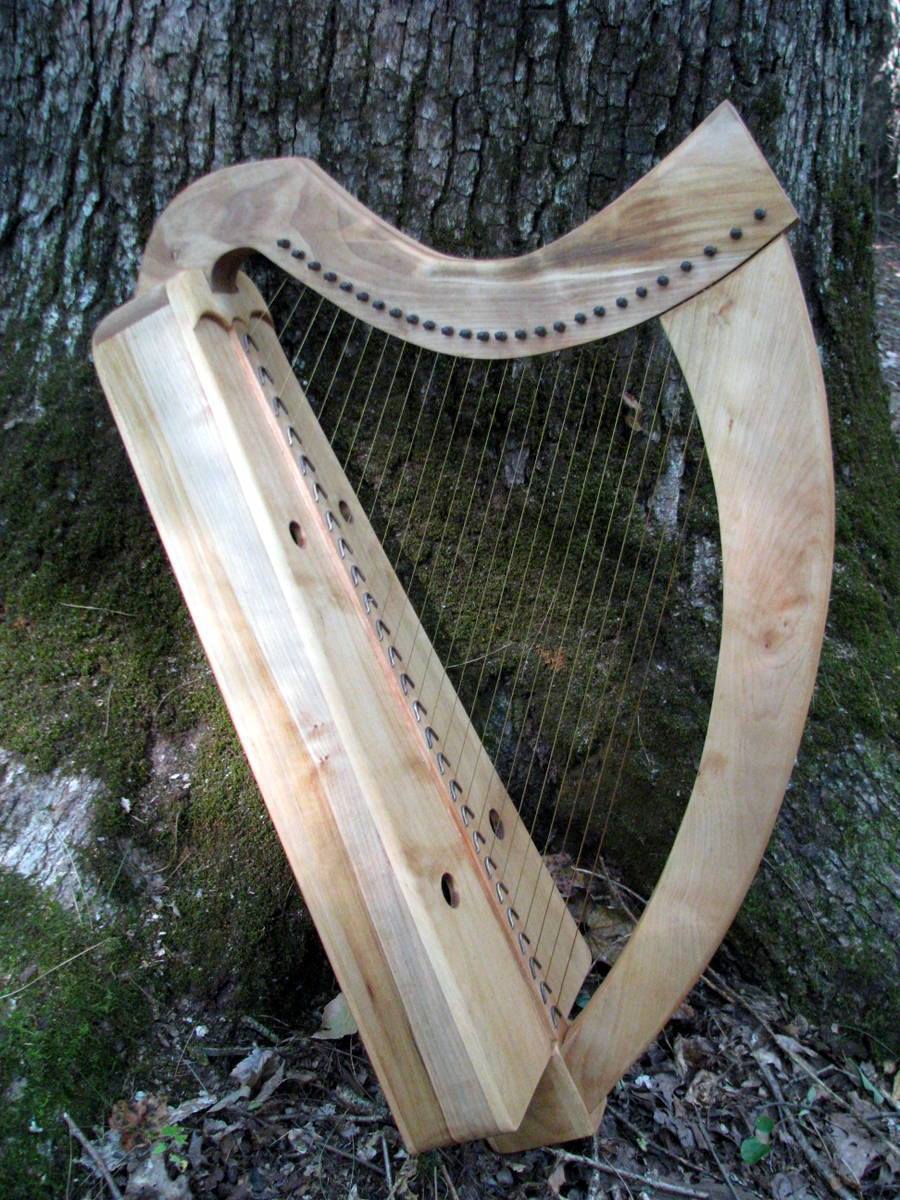Ambrosial maple in the wild!

Maple is a very fine tone-wood, it is an excellent choice for making a harp. And keep in mind that if the harp is from Europe, what they call sycamore is actually a type of maple, not the huge plantanus trees we call by the same name.
But those tones come at a price. Maple is hard and is on the more difficult side to work. It does not take glue as well as other woods and so requires careful attention to glue strongly. It can be treacherous with irregular spots in the grain.
But when a maple tree dies of natural causes and remains standing, which they will for a good many years, the action of fungus on the wood will lighten the structure and in the process stain the wood as you see. If the log is felled and milled at just the right amount of fungal decay (spalting), it can become the best of both worlds. It becomes easier to work, glues very well, makes a lighter harp, and it mellows out the sound somewhat toward the sound of sassafras or willow.
Alas the tree from which this wood came had a hollow trunk. These branches and secondary trunks were scarcely 14″ across, far too small to mill for harp parts. This is a stack of firewood.

But here too is an ambrosial maple plank from a time back, more than 16″ wide quarter-sawn.

And one of the harps made from it.

